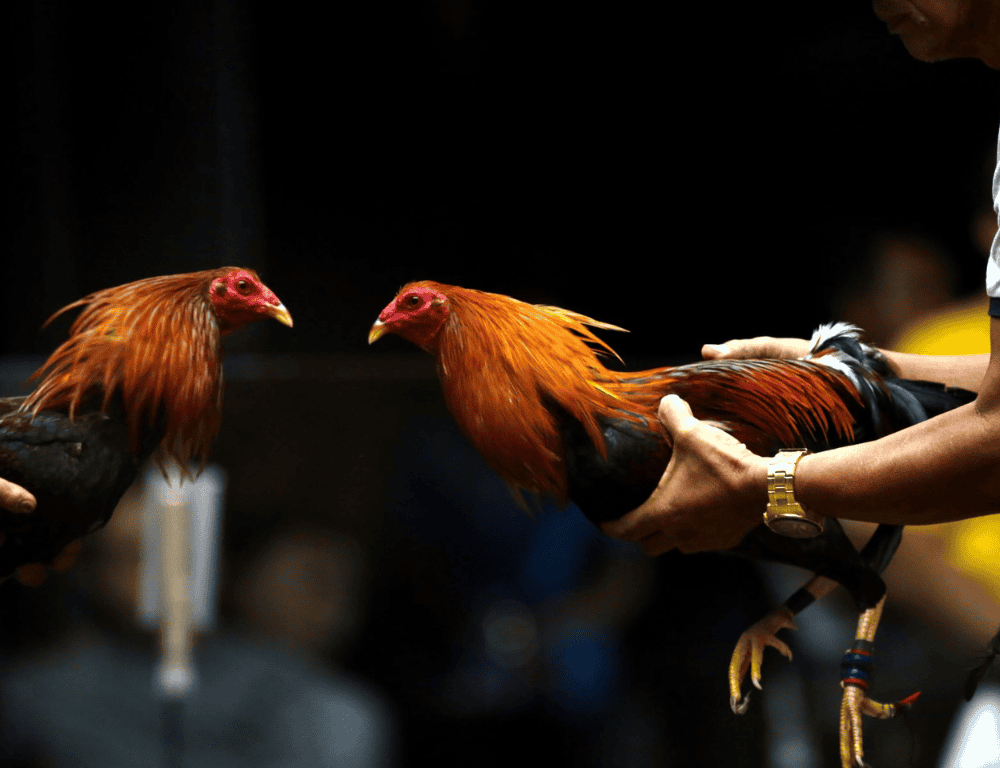Insights from a Sabong Grandmaster: Tips for Aspiring Cockfighters
Insights from a Sabong Grandmaster: Tips for Aspiring Cockfighters
Blog Article
Keys of the Sabong Grandmaster: Understanding the Art of Cockfighting
The elaborate globe of cockfighting, especially as exercised by the Sabong Grandmaster, supplies a fascinating study in the convergence of pet habits, training techniques, and affordable strategy. To really understand the nuances of this art kind, one should check out just how the Grandmaster integrates the physical and emotional facets of fowl training while browsing the moral factors to consider inherent in this traditional practice.
Background of Cockfighting

As the centuries progressed, cockfighting spread throughout different continents, adjusting to regional customizeds and social characteristics. In medieval Europe, it obtained popularity among the nobility, that regarded it as a display screen of riches and status. By the 17th century, the sporting activity had developed itself in England, resulting in the development of formalized regulations and policies.
In the Americas, particularly in the Caribbean and the Philippines, cockfighting handled unique attributes influenced by native techniques and colonial backgrounds. Today, while the sport continues to be controversial and deals with lawful challenges in several regions, its historical value remains to stimulate conversations about animal legal rights, social heritage, and societal values. The development of cockfighting mirrors broader styles of human communication with nature and the intricacies of custom.
Recognizing Rooster Behavior
Comprehending fowl actions is important for those included in the sporting activity of cockfighting, as it straight affects training, health, and performance. Roosters display a variety of actions that can show their psychological and physical states. Notably, hostility, territoriality, and social pecking order play considerable functions in their temperament.
Aggressiveness is an all-natural reaction in fowls, largely driven by the demand to insist prominence. Observing communications amongst roosters can expose their pecking order, which is important for managing their environment. A confident fowl presents an extra assertive pose, while a submissive one may show indicators of stress and anxiety or anxiety, such as crouching or staying clear of eye get in touch with.

Training Techniques for Champions
Reliable training techniques are critical for establishing champ roosters that succeed in the affordable arena of cockfighting. A methodical approach makes sure that each bird reaches its full capacity, incorporating physical conditioning with psychological fortitude.
To begin, developing a consistent training program is essential - Sabong Grandmaster. This includes day-to-day exercises that enhance stamina, dexterity, and endurance. Routines may entail regulated sparring sessions with both real-time and fabricated challengers to mimic competitors, permitting roosters to hone their combating abilities in a secure environment
Integrating dexterity drills, such as barrier courses and jumping exercises, dramatically improves a rooster's physical abilities. Furthermore, presenting diverse surface areas and surfaces can enhance their adaptability during fights.
Mental training must not be forgotten. Acquainting the birds with the audios and views of an affordable environment can reduce tension and stress and anxiety on fight day. Positive reinforcement techniques, such as rewarding desirable behaviors, can instill self-confidence in the fowls.
Last but not least, keeping a calmness and assertive existence during training sessions fosters trust between the trainer and the fowl, vital for accomplishing optimal efficiency. With each other, these methods develop an extensive training regimen that check cultivates champs prepared to stand out in the arena.
Health and Nourishment Basics

Integrating a mix of barley, corn, and wheat gives required carbs, while protein sources such as fish meal, soybean meal, or bugs sustain muscular tissue growth and recovery. Additionally, incorporating fresh vegetables and fruits can improve the general dietary account, using anti-oxidants that enhance the body immune system.
Hydration is just as important. Access to clean, fresh water should be a see it here priority, as dehydration can seriously affect performance (Sabong Grandmaster). Regular health check-ups are important to keep track of for any potential illnesses or parasites that might endanger a rooster's problem
Furthermore, the timing of feed is vital. Giving nutrition at suitable intervals makes sure that roosters maintain power degrees throughout their training and recovery stages. By concentrating on these wellness and nutrition essentials, sabong enthusiasts can aid their fowls achieve optimal efficiency in the competitive arena.
Approaches for Effective Suits
Success in cockfighting rest on a combination of strategic prep work and in-ring strategies. Effective suit methods begin long prior to the fight, with careful option of the fowl. Breeders need to focus on genetic attributes such as endurance, resilience, and aggressiveness, guaranteeing that the picked bird demonstrates a solid lineage of efficiency.
Training is essential; fowls should be conditioned via a regimen that consists of workout, sparring with various other birds, and exposure to different environments. This preparation not just builds stamina yet also boosts the bird's adaptability to different challengers.
During the suit, a trainer should utilize eager observation and quick decision-making. Identifying the opponent's techniques enables timely changes, such as shifting the rooster's stance or motivating extra aggressive habits. Timing is essential; knowing when to limit the bird or encourage can imply the difference in between triumph and loss.
Last but not least, keeping a tranquil disposition during matches promotes self-confidence in the fowl. A well balanced strategy, incorporating both psychological and physical readiness, ultimately leads to successful outcomes in the arena, demonstrating that mastery in cockfighting is as much about strategy as it has to do with the birds themselves.
Verdict
The mastery of cockfighting, as exemplified by the Sabong Grandmaster, hinges on a detailed understanding of rooster actions, efficient training techniques, and optimal health and nutrition. Inevitably, the keys of the Sabong Grandmaster lie in the unified equilibrium of these components, making sure the continued heritage of this old sporting activity.
To truly comprehend the nuances of this art form, one need to explore how the Grandmaster balances the emotional and physical facets of fowl training while navigating the moral factors to consider intrinsic in this typical practice.Recognizing fowl actions is vital for those included in the sporting activity of cockfighting, as it directly affects efficiency, training, and wellness.Preserving ideal wellness and nutrition is crucial for guaranteeing that fowls get to peak performance in the cockfighting field. Providing sustenance at appropriate intervals guarantees that fowls maintain power levels throughout their training and healing phases.The mastery of cockfighting, as exemplified by check this site out the Sabong Grandmaster, hinges on a comprehensive understanding of fowl behavior, effective training methods, and optimal health and nutrition.
Report this page